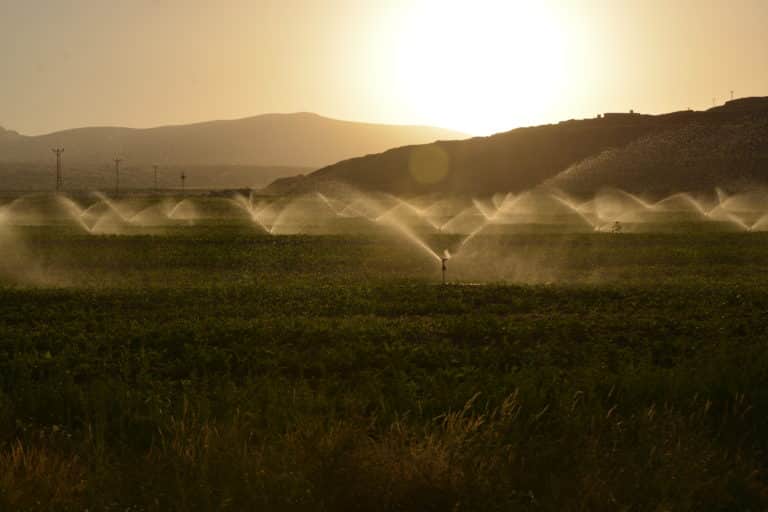Uncategorized
Hemp Farm Irrigation Methods
Maintaining Your Hemp Farm
There are tons of articles and guides being published on how to properly start and maintain a hemp farm. We’ve published a few ourselves at Blue Forest Farms! The market for these kinds of things is big, with a ton of brand new farmers eager to find a foothold in this booming industry. Yet there are some aspects of growing hemp that get far less attention than others. We’re talking, of course, about irrigation.

Hemp Farming Irrigation
While it might not seem like the most important topic of hemp farming to focus on early, it is absolutely one new farmers should be aware of. Meeting hemp’s water and nutritional requirements can mean the difference between decent and truly high-quality CBD producing hemp. If growing hemp for its CBD content is why you’re farming, irrigation should now be one of your top priorities. If done correctly, proper irrigation can even help you keep your crop THC compliant. Here are a few things every hemp farmer, new and old, should be aware of when it comes to properly irrigating your hemp for success.
Hemp and Water
Hemp is a strong, resilient plant that can adapt to many different environments and weather climates. Even a hemp plant growing in fairly poor conditions still has a good chance of surviving. That said, there is a major difference between surviving and thriving! Keeping hemp healthy, especially when you’re growing it for CBD production is obviously a better goal. Given adequate amounts of water, hemp will grow heavier and have higher and more concentrated cannabinoid levels. Hemp that receives adequate water has a much lower chance of THC spikes that can occur due to dry soil. In general, a crop of hemp needs somewhere around 20 to 30 inches of water each season. Many areas may not get that much rainfall in a season, at least not predictably, which is where irrigation systems come in. Researchers at Colorado State University observed that hemp fields with irrigation systems produced a yield almost three times larger than non-irrigated fields. Yes, you read that right – three times larger!
Drip System
Perhaps the most advantageous irrigation system specifically for CBD hemp farms is the drip system. Drip systems, unlike traditional overhead irrigation systems, water the roots of hemp plants directly through strips that run just under the soil. This is far more efficient in allowing more water to be directly absorbed by the plant, and cuts down on wasted water that evaporates or fails to reach the roots. This system can even reduce your total water consumption by up to 60% in some cases. It also allows for extra nutrients to be added into the drip line, directly feeding the plants far faster and easier than by hand. This system also helps prevent fungus and weed growth as there is little to no excess water and nutrients in the surrounding soil. Finally, the automated nature of a drip system makes the entire watering process simple and easy. Additional sensors can even be installed to fully automate the system and provide water only when needed, no matter how much or little natural rain there is. Drip systems are also fairly simple to install and maintain, so they’re equally suitable for backyard grows and larger farms.
Other Irrigation Options
While drip irrigation is something of the unofficial top choice when it comes to irrigation systems for hemp, that doesn’t mean there aren’t other options. If you have an existing irrigation system you can use that on your hemp farm. Let’s talk about the ways other common irrigation systems work for hemp.
Farm Sprinkler Systems
Micro-Sprinklers
Micro-sprinklers are probably the next best system after drip irrigation, and can be installed if irrigation water has a lot of sediment, which might make a drip system unsuitable. They hang just above the hemp, and only spray in small, contained areas rather than a wide range or through pipes. This keeps water consumption down and reduces evaporation by targeting smaller areas.
Center Pivot System
The center pivot system is another irrigation method. It’s popular and widely used on farms for general irrigation. While it certainly can work for hemp, it is also the least efficient. This system uses a sprayer fixed in the center of the field that can rotate as it sprays to cover the entire crop. These work best on either circular or square-shaped fields, and can be modified to extend the range, if necessary.
Linear Move
Linear move systems are very similar to central pivot, only instead of being fixed in the center, the sprinkler system itself moves across the field as it sprays. These really only work well for rectangular-shaped fields on very flat ground. Both center pivot and linear move systems are somewhat inefficient at water conservation due to a higher evaporation rate than drip or micro sprinklers systems.
Good Irrigation is Good For Everyone!
A good irrigation system can be thought of as being similar to the veins of your body. They are responsible for carrying nutrients to the vital areas – your hemp plants – and keeping them alive and thriving. Certain systems work better under different circumstances. Regardless of which one you choose, the studies all show that an irrigation system can drastically increase your farm’s output and overall quality. After all, a healthier, happier hemp plant is going to be worth far more than one barely surviving or clinging to life. All new farmers should remember to take a close look at irrigation to make sure their farm gets off on the right foot.
Sources:
https://www.fortunahemp.com/hemp-crop-irrigation/
https://www.netafimusa.com/agriculture/solutions-for-your-crop/hemp/
https://pumpbiz.com/blog/irrigation-for-hemp-growers/
https://hempindustrydaily.com/myth-busting-hemp-needs-more-water-than-many-think/
https://www.bonafideseeds.com/industrial-hemp-farming-equipment/



